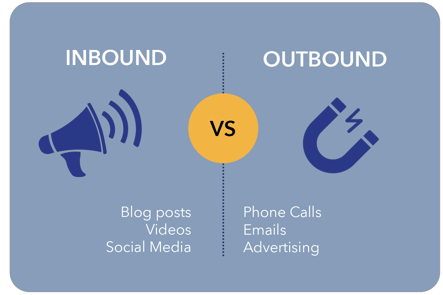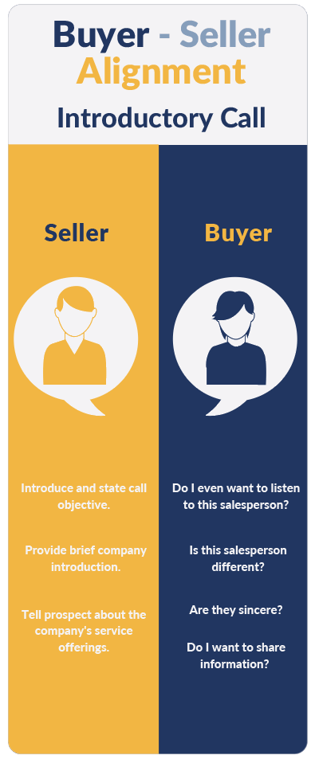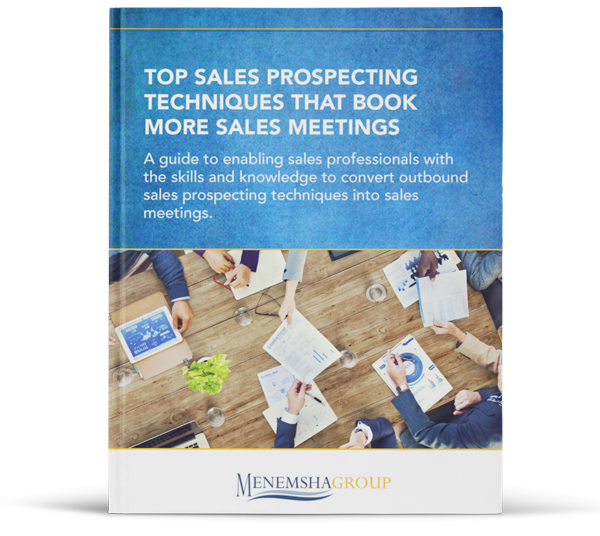Top Sales Prospecting Techniques That Book More Sales Meetings
A guide to enabling sales professionals with the skills and knowledge to convert outbound sales prospecting techniques into sales meetings.


All staffing and recruiting industry sales professionals share one goal: to book sales meetings with new prospects. And the only way to book these meetings is by prospecting.
Staffing and recruiting industry leaders agree that effective sales prospecting is essential to building a healthy sales pipeline and sustaining revenue growth. We spoke with over 150 CEOs of staffing and recruiting firms, and 73% said that their sales teams’ inability to consistently book meetings with new prospects is their top barrier to attaining their growth objectives.
While everyone agrees on the importance of sales prospecting, very few excel at it.
- Only 19% of U.S.-based executive buyers believe their time spent with salespeople is valuable and lives up to their expectations (according to a Forrester Research survey with over 400 respondents).
- Only 23% of B2B buyers consider sales professionals to be an effective resource for solving their problems. Most buyers will wait to contact salespeople until late in the decision-making process (according to a Miller Heiman Group survey).
- 42% of sales professionals say prospecting is the hardest part of their job (according to HubSpot).
Each of these survey results demonstrates a fundamental disconnect between the approach sellers take to sales prospecting and the buying experience customers seek. In the age of the empowered buyer, salespeople can only be successful by engaging customers in their context, from their perspective. Unfortunately, sales teams too often fail to understand their prospects’ motivations and perspectives.
There is a significant difference between how salespeople see the world, and how their prospective customers see the world. I wrote this eBook to help sales professionals in the staffing and recruiting industry bridge that gap.
In the following sections, I’ll reveal three things you must know and four skills you (and the members of your sales team) must gain to engage new prospects in the era of the empowered customer. I’ll start by clarifying two concepts:
- What is sales prospecting?
- What are the differences between sales prospecting techniques, skills, and knowledge?

Sales prospecting is the activity of working through your prospect list — a group of potential buyers who may potentially be interested in your offering and benefit from your products and services — via outbound email, text, phone, and postal mail.
In general, there are two forms of sales prospecting: inbound sales prospecting and outbound sales prospecting.
Inbound Sales Prospecting
Inbound prospecting is when prospects come to you. They might have landed on your company’s website through a blog post or online advertisement or downloaded a company branded eBook.
Engagement is easier with inbound sales prospecting because the customer comes to you. Prospects are more willing to share with you what they’re looking for and why. Nevertheless, inbound prospecting requires an inbound marketing team to continuously create fresh, highly relevant, and engaging content for your ideal customers.
Outbound Sales Prospecting
Outbound sales prospecting is when you “hunt” for new prospects. Outbound sales prospecting is the process in which sales professionals search for, identify, and proactively reach out to prospects. This means the prospect being contacted didn’t indicate interest in your company before you (the sales team) reached out.
Cold calling, cold emailing, and any other “cold” contact strategy falls into the outbound sales prospecting category.

Technique Without Skills and Knowledge Is Useless
Most guides to sales prospecting cover specific techniques, such as:
- Cold calling
- Email marketing
- Social selling
- Networking
- Insight selling
All of these sales prospecting techniques are proven. However, what the authors fail to explain is that there are prerequisite skills and knowledge required to execute these sales prospecting techniques.
One can’t just start cold calling and expect to experience success without first developing some basic communication skills. And you’re not going to have success with social selling without developing analytical and writing skills. If you are interested in trying “insight selling,” first you will need to develop buyer persona and business acumen knowledge.
Many companies attempt to teach their sales teams “consultative selling,” but very few are enabling their salespeople with questioning skills. Your company probably teaches objection handling but do you teach your salespeople empathy? Acknowledgement? When and how to check for feedback?
Salespeople can’t be expected to apply these sales prospecting techniques (or sales prospecting best practices) without first being enabled with the underlying competencies that support the techniques.
Technique without skills and knowledge is useless. That is why the focus of the rest of this eBook is on gaining the underlying skills and knowledge salespeople need to be effective in the modern staffing and recruiting landscape.
 Thanks to the internet, today’s buyers have a lot of information to sift through and options to consider for solving their challenges and achieving their goals. But they don’t necessarily have more wisdom or confidence in the decisions they must make. Today’s empowered buyers need salespeople like you to share your perspective and offer fresh ideas and insights drawn from your experiences helping other like-minded customers.
Thanks to the internet, today’s buyers have a lot of information to sift through and options to consider for solving their challenges and achieving their goals. But they don’t necessarily have more wisdom or confidence in the decisions they must make. Today’s empowered buyers need salespeople like you to share your perspective and offer fresh ideas and insights drawn from your experiences helping other like-minded customers.
Here is what today’s buyers say about working with top-performing sales professionals:
- “My salesperson educates me with ideas, insights, and new perspectives.”
- “My salesperson collaborates with me on how to improve my business results.”
- “My salesperson asks me thought provoking questions which gives me clarity and helps me see new and different ways to achieve improved results”
To engage in this level of dialogue and consistently book new sales meetings with new prospects, salespeople must be enabled with the following knowledge and skills.
 Knowledge consists of facts, concepts and principles acquired through experience or training and committed to memory.
Knowledge consists of facts, concepts and principles acquired through experience or training and committed to memory.
To convert outbound sales prospecting techniques into new prospect sales meetings, salespeople must be enabled with the following three pieces of knowledge:
- The ideal customer profile
- Buyer personas
- A strong value proposition
1. The Ideal Customer Profile
Before you can master sales appointment setting — and before you can even start to make calls and send emails — you must first be crystal-clear on exactly who you want to be talking to and why.
Think about how much effort it takes to actually get someone to say, “Yes, I’d like to meet with you.” And then, after all that effort, how frequently that person turns out to be the completely wrong individual for you to talk to. If that happens, it’s because you haven’t defined your ideal customer profile.
Salespeople who lack an ideal customer profile (ICP) waste countless hours talking to people who were never going to buy from them in the first place. The clearer you are about your ICP, the more effective your outreach will be. And, in turn, the more often you’ll be able to set an appointment. Defining your ICP (and buyer personas, which I’ll explain below) makes successful appointment setting scalable and repeatable.
One of the best ways to tighten up your ICP is to identify who you don’t want to speak to. Who are the companies and people you might come across that are likely to not be a fit? Getting very clear on who you don’t want to talk to will ultimately help you clarify who you want to connect with.
2. Buyer Personas
 The illustration below lists (in the left column) the typical things salespeople say and do when engaging a prospect for the first time. The column on the right lists the questions and concerns running through the mind of the prospect. Can you see the disconnect?
The illustration below lists (in the left column) the typical things salespeople say and do when engaging a prospect for the first time. The column on the right lists the questions and concerns running through the mind of the prospect. Can you see the disconnect?
The first thing your prospect notices, and often the only thing, is how well you and your sales team understand them: their role, their challenges, their industry, and the goals they want to achieve.
Buyers have many options to consider and decisions to make before agreeing to meet with a salesperson. So, why don’t more salespeople take the time to better understand the buyer’s perspective? Because they’re mostly focused on what they’re going to say. While the seller is talking, the buyer is evaluating the salesperson.
To stay in alignment with the buyer and consistently book new prospect sales meetings, salespeople must possess buyer persona knowledge.
What Is a Buyer Persona?
A buyer persona is a fictional, generalized representation of your ideal customer or customers. A buyer persona contains information about the buyer and their business interests, including:
- Their role and responsibilities
- Their goals and objectives
- The common challenges they face in their role
- How they are measured
- Their likes and dislikes
- Other demographic information
Buyer personas are based on market research, including customer interviews.
How Buyer Personas Enable Salespeople
At the most basic level, buyer personas enable salespeople to personalize their messaging for the different buyers they sell to. Instead of leaving the same message for every prospect, salespeople must tailor their messaging by buyer persona type. Personalizing your message requires buyer persona knowledge.
Without buyer persona knowledge, salespeople are left with nothing to talk about but themselves, their company, and their service offerings. They’re forced to go into a sales pitch. But when salespeople possess buyer knowledge and use buyer personas, they can make the prospect — and what matters to the prospect — the focal point of the discussion.
Buyer Persona Example
The illustration below depicts a buyer persona for a chief information officer (CIO). Someone selling IT staffing services to CIOs would use this buyer persona to guide their calls, demonstrate credibility, and book meetings with every CIO within this market segment (financial services, $750 million to$1.5 billion in revenue). This buyer persona would help a salesperson prepare for their call and personalize the buying experience for their prospects.
_Page_1.jpg?width=671&name=V1-Buyer%20Persona%20Example%20Tech%20CIO.pdf%20(1)_Page_1.jpg)
3. A Strong Value Proposition
If you or your salespeople are struggling to book sales meetings with new prospects, your value proposition is not strong enough. Let’s examine two sample value propositions, both of which are representative of what we find in the staffing and recruiting industry:
“ABC Staffing was founded on one simple principle: to drastically simplify the process of finding qualified professionals and solutions for any type of business.”
“XYZ Staffing helps client companies and candidates succeed. We help our clients achieve their business objectives and we help our candidates propel their careers forward. Your success is our business.”
What do these value propositions have in common? They’re both extremely vague. What quantifiable impact would a client receive from using either of these firms? It’s not clear — and that is my point.
What Do Your Prospects Want? Business Results
The job of a corporate business manager who leads a team is to leverage all available resources to pursue and achieve their goals and objectives.
Corporate business managers spend their time thinking about the people they’re responsible for and the people they’re accountable to. They want to keep their boss and their customers happy while fulfilling the obligations and expectations placed on them. This is how your prospects remain employed, receive promotions, and earn bonuses, stock options, and other incentives.
Towards that end, what all managers want are business results. The business results your prospects want include:
- Increased revenue
- Reduced costs
- Improved asset utilization (improved efficiency)
- Increased market share
- Accelerated time to market
- Reduced customer churn
What does this have to do with your organization’s value proposition? From a prospect’s perspective, a value proposition should answer the following question:
What quantifiable results can you deliver for my business?
A value proposition should highlight the tangible business results a customer gets from using your product or service. Your value proposition should focus on results or outcomes, not on your internal processes, or the quality of your recruiters or your recruiting process.
Your value proposition should include metrics or statistics to quantify your value and your impact on your customers’ businesses.
Example of a Business Results-Oriented Value Proposition
Here is a value proposition I wrote in 2005 for Kelly Services.
We helped Wyeth Pharmaceuticals implement a master data management (MDM) strategy which has enabled them to fully integrate their quality assurance, product development and manufacturing processes resulting in integrated planning and decision making. As a result they have:
Reduced time to market by 28%
Reduced manufacturing costs by 18%
Reduced warehousing costs by 23%
Notice this value proposition doesn’t discuss candidate skill sets, fill ratios, or our recruiting and screening process. Why? Because this value proposition was written from the customer’s perspective.
4 Sales Prospecting Skills Required to Book New Meetings
 There’s a huge difference between knowing something and possessing the skills to actually do that thing. For example, you might know everything about baseball, including the history of the game and every statistic, but if you were to stand in the batter’s box against a 97 mile-per-hour fastball, you would strike out in three pitches.
There’s a huge difference between knowing something and possessing the skills to actually do that thing. For example, you might know everything about baseball, including the history of the game and every statistic, but if you were to stand in the batter’s box against a 97 mile-per-hour fastball, you would strike out in three pitches.
Skills are defined as “how to do things.” Skills allow sellers to put their knowledge into practice, improving their capability, capacity, productivity, and performance. Skills can only be mastered through experiential learning.
These four sales prospecting skills form a foundation for sales prospecting best practices and booking sales meetings:
- Disarming
- Empathy
- Flipping the conversation
- Selling the value of the meeting
1. Disarming
When your prospect receives your unsolicited phone call (or email) it’s just another unplanned interruption in their day. Internal sirens go off in their head: “Warning! Warning! Salesperson calling!” Their defense mechanisms kick in and their guard goes up.
Until your prospects know you and know that they can trust you, they will naturally be skeptical of you and what you have to say. To make your prospects feel comfortable speaking with you, answering your questions, and even considering meeting with you, you will need to develop the skill of disarming.
Disarming means to relieve your prospect of anxiety, pressure, or hostility, and to put them at ease. Disarming is all about diffusing the prospect’s internal defense mechanisms by making them feel in control. For example, you might say, “I know you were not expecting my call, have I reached you at a bad time?” Or, “may I make a suggestion?” Asking the prospect for their permission (to do anything) is a highly effective form of disarming because it gives them a level of control.
2. Empathy
According to Wikipedia, “Empathy is the capacity to recognize emotions that are being experienced by another.” Having empathy means that you are able to put yourself in the shoes of another person and see the world through their eyes.
It is critical that salespeople develop empathy because empathy makes the prospect feel understood. Demonstrating empathy is the most powerful form of rapport building.
In the context of outbound sales prospecting and scheduling sales meetings with new prospects, demonstrating empathy is important for addressing commonon “blow-off” objections like these:
- “I’m busy. Can you call me back another time?”
- “I’m in the middle of putting out a fire!”
- “I can’t meet this month. Try me next quarter?”
Salespeople can demonstrate empathy in their choice of words and their voice tonality.
3. Flipping the Conversation
When trying to book sales meetings, prospects tend to ask salespeople lots of questions such as:
- “What is this about?”
- “Can you just send me some information?”
- “Can you try me back next month?”
- Or prospects will attempt to shut down the conversation with comments like:
- “I’m not in the market.”
- “My hands are tied.”
- “I’m not the right person.”
- “You need to call our HR department.”
After acknowledging and demonstrating empathy with what the prospect has said, but before answering these questions, salespeople should seek to understand why the prospect is asking the question or making the statement.
Flipping the conversation refers to answering the question with a question. For example, the salesperson might say:
- “I’m sorry, I didn’t articulate myself very well which has created some confusion. What I was saying was…”
- “What specific information are you looking for?”
- “When you say your hands are tied, what exactly does that mean?”
- “Why do you say that I should speak with your HR department?”
By flipping the conversation, salespeople accomplish two key objectives:
Regaining control of the conversation. Now the salesperson is the one asking the questions
Building rapport. Flipping the conversation gets the prospect talking about what is important to them and gives the seller the opportunity to move the conversation forward and ask for the meeting.
In the context of trying to book a meeting with a new prospect, flipping is a key skill because it allows the salesperson to maintain control of, and direct the conversation.
4. Selling the Value of the Meeting
When asking a prospect for the meeting, you need to pitch the value of the meeting. Let’s refer back to the buyer-seller framework.
As you’ll recall, in the left column are the typical statements salespeople make when trying to book an appointment with a prospect. The right column highlights the questions and concerns going through the mind of the prospect. After considering the buyer’s perspective, it should be clear why salespeople struggle with booking sales appointments.
With the customer’s perspective in mind, when asking for the meeting, you should articulate the following:
The highly relevant and valuable information you will be sharing with the prospect such as industry trends or benchmarking data
Success stories demonstrating how you have made an impact for similar customers trying to accomplish similar goals
Customers want to hear how you have helped other like-minded customers solve their problems and achieve their goals. They want to learn something new. This is how salespeople personalize the sales experience and build value into the sales process.
Please complete the form to the right to download this ebook.

Next Steps
To learn more about Menemsha Group’s sales and recruiter enablement solution including how we leverage innovative technology and modern learning methods to make winning behaviors repeatable and deliver predictable revenue growth, download our eBook, Menemsha Group’s Sales & Recruiter Enablement Roadmap for Scalable Growth. In the eBook you will discover the tools, technologies, techniques, methodologies, content and processes we employ to help staffing and recruiting firms attain scalable, repeatable success.



